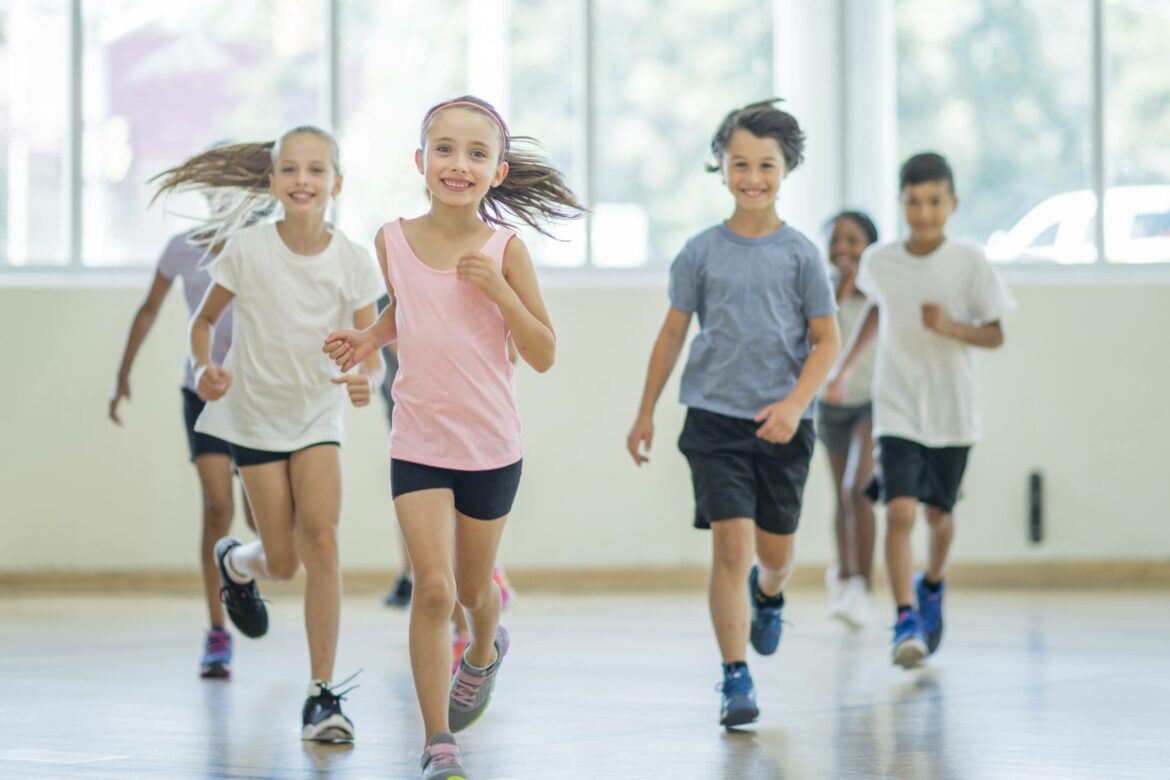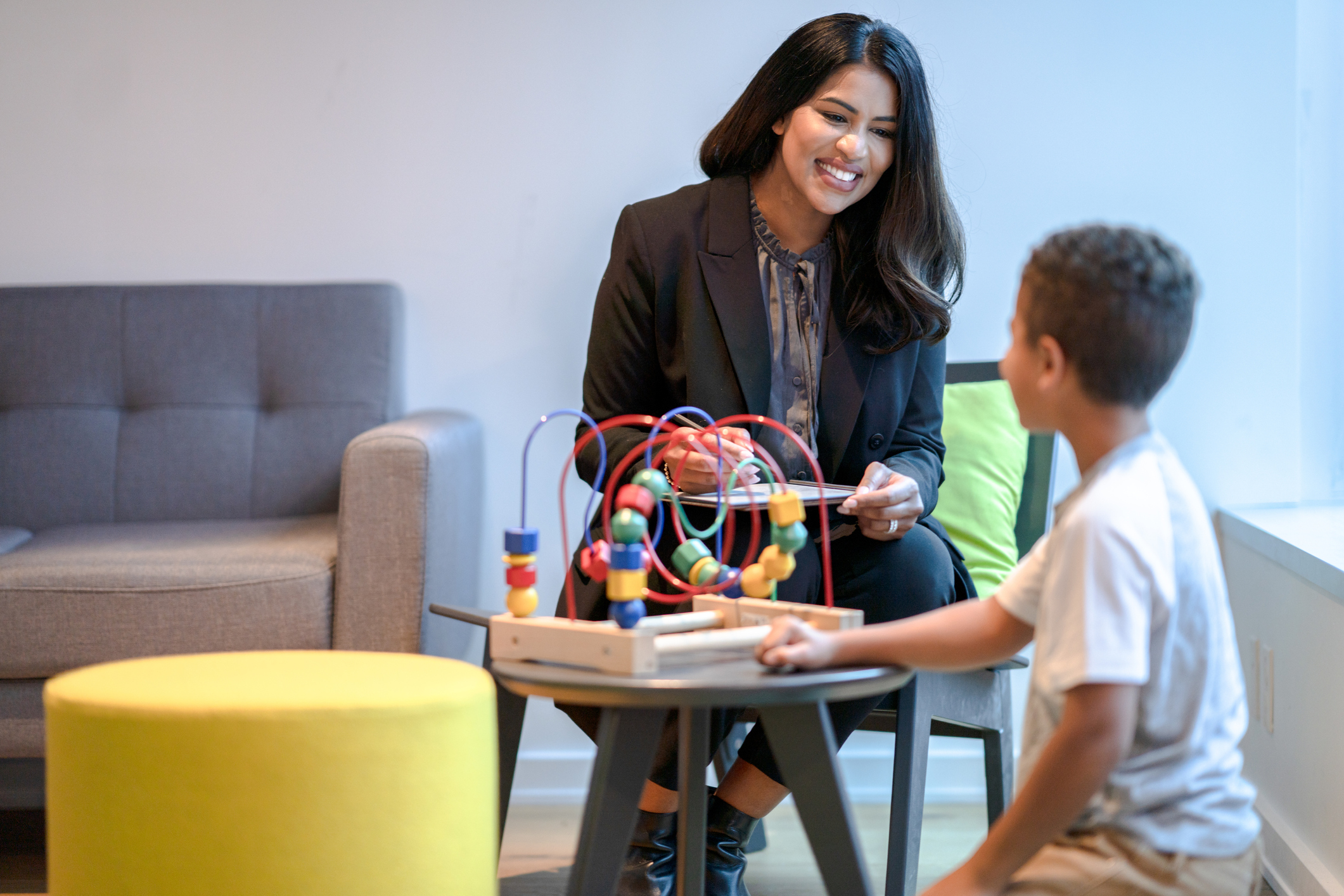Ready. Set. Go! Whether we are competitively running, swimming, or playing ball, we listen for the signal to begin moving. It may be a whistle, audible words over the megaphone, or even a prompt on your smart watch. Physical activity can be part of a regular exercise routine, competition, or even an impromptu game of chase. It can be inside, outside, in a pool, on a court, in a field. The beauty of physical activity is that there are so many options to choose from and so many benefits.
Benefits of Staying Active
Health behaviors are actions related to physical activity, sleep, nutrition, and social engagement that we can take to promote, maintain, or regain our physical and mental well-being. Learning healthy habits for regular physical activity can establish a foundation for lifelong health and well-being. For example, youth who are regularly active do not usually develop chronic diseases, such as heart disease, hypertension, type 2 diabetes, or osteoporosis.
Benefits of physical activity may include:
- cardiorespiratory fitness (improved heart, lung function)
- better coordination and balance
- stronger muscles
- lower body fat and/or weight management
- stronger bones
- improved cognition, including memory, executive function, processing speed, attention
- improved academic performance
- lower stress levels
- improved mood
How We Move
Constant movement is typical in preschool children. They frequently choose play that involves physical activity, such as playing chase, animating toys, building structures, etc. The Centers for Disease Control and Prevention has provided recommendations for daily physical activity in youth:
- Physical activity throughout the day
- Adult caregivers should encourage active play that includes a variety of activities
When adults engage in active play with youth, they are modeling healthy habits for physical activity and encouraging socialization and communication skills. For example, when a caregiver joins in and goes down the slide, jumps in the pool, or builds a pillow fort, this provides an opportunity for strengthening of the caregiver-youth relationship.
As children mature into adolescence, their patterns of physical activity change. They move less often but are able to sustain longer periods of activity.
Key recommendations for youth ages 6-17 years are:
- Daily: At least 60 minutes of mostly moderate-to-vigorous aerobic physical activity Aerobic activity uses your body’s large muscle groups and is rhythmic and repetitive (e.g., running, jumping rope, dancing, bicycling, etc).
- In these 60 minutes, 3 days per week:
- Aerobic activity is of vigorous intensity (e.g., running, including playing tag; games, such as tag or follow the leader; skiing; sports involving a ball; dancing)
- Include muscle-strengthening activity (e.g., weight lifting, resistance training, climbing trees, playing on playground equipment).
- Include, a bone-strengthening activity, which is any activity that puts force on the bones of the body, usually created by impact with the ground (e.g., running, tennis, basketball, etc.).
School age youth usually do not engage in or need formal muscle strengthening regimens, such as weight lifting. Instead, they often increase muscle strength through unstructured activities (e.g., climbing trees, jump rope). If youth engage in formal training programs, they should be properly prescribed and supervised to ensure safety and avoid injury, muscle and joint fatigue, etc.
Movement for Neurodiverse Youth
Youth with neurodiversity are more likely to be inactive due to physical limitations, medication side effects, and other issues. Families are encouraged to consult their medical provider(s) to understand the types and amounts of physical activity appropriate for their children, such as sensory-friendly exercises (e.g., yoga) and adaptive sports (e.g., wheelchair basketball, goal ball, etc). Many gyms and exercise facilities are now offering sensory-friendly experiences for neurodiverse populations (e.g., reduced lighting, low occupancy, low volume/no music, etc.) at specified times.
Challenges to Engagement in Routine Physical Activity
Families may perceive and/or experience a number of challenges to routine physical activity, including lack of time, energy and motivation, skills, and resources. Busy schedules, stress, and suboptimal sleep can lead to exhaustion, making it difficult to find the time and energy to engage in regular physical activity. Access to gyms and other facilities, equipment, or safe outdoor venues can also serve as barriers to engagement in physical activity.
Impact of Behavioral Health Symptoms on Physical Activity
Fears and anxiety associated with perceived failure, stigma, crowded places, and performance also keep youth from being active. Depression and other behavioral health symptoms (e.g., substance use) can also impact motivation to move. Youth who experience body image issues may avoid physical activity in social environments, such as gyms or studios or may engage in an unhealthy level of physical activity (i.e., too intense, frequent). Youth who experience these behavioral health symptoms are encouraged to seek professional support. There are evidence-based behavioral health interventions that target body image issues, substance use, mood, and fears/anxiety.
Tips for Staying Active
On the other hand, engaging in routine physical activity can improve mood and energy level and help manage stress. It’s not easy to change our behaviors, especially when we are busy and when it’s so hot (or cold) outside. It can also seem overwhelming, so let’s start with some ideas that you might consider. What changes could you make to promote your family’s health and well-being? Which changes might be easier versus harder? Is there one that you could start with?
- Start with small goals and work up to where you want to be. Setting small goals helps your plan be realistic, and gives you the opportunity to see progress, which can help you stay motivated.
- Consider your options as they will impact your schedule. If you have access to a gym, what are the hours and when are classes held? If you’ll be outdoors, what is the weather and is daylight important?
- Choose an activity that you enjoy. You are much more likely to stick with it if you are doing something that you like.
- Establish patterns to your behaviors. For example, try to be active a similar time each day (e.g., first thing, after work/school). It can be helpful to put your exercise plan into your daily calendar.
- Consider working out with a friend or family member. When you have someone else counting on you, it makes it easier to follow through with your plan and stay motivated.
- Anticipate potential challenges, such as time, fatigue, too much to do, overwhelmed, childcare, no available resources (financial, equipment, etc.), and think about ways to address them. For example, monitor how you spend your time for a week and then find some 20-30 minute slots that you might be able to use. Start simple with walking. All you need is a pair of shoes! Consider looking into an online stretching program. Ask a friend or neighbor to watch your kids and volunteer to do the same for them.
- Engage in other health behaviors that promote healthy living and are related to physical activity. For example, eat well and drink plenty of plain water. For more information, consult our nutrition blog. Get the recommended amount of sleep. If you fuel your body with the recommended nutrients and rest, you will have more energy to move.
- Caregivers are encouraged to lead by example. Play catch with your kids, take a family walk after dinner, or play basketball at the park. Take the dog for a walk. Spending time actively moving as a family also provides opportunities for building your relationships.
- Make changes to your daily routine that increases your steps and movement, such as walking instead of driving, whenever you can. For example, take the stairs instead of the escalator. Get off the bus early and walk. Park farther from the store entrance and walk. Do yard work. Wash the car by hand. Take your kids to the park.
- Track your physical activity so you can see your progress and notice when you are encountering challenges.
- To help manage busy schedules and stress, use your physical activity time to take care of other things, too. For example, consider returning phone calls while you walk or run, or tune into a podcast or show that you’ve been wanting to listen to.
- Listen to music. For some people, listening to upbeat music can help motivate them to move faster. For others, listening to classical or calming music helps quiet their minds while engaging in physical activity.
- Be safe! Consult professionals if you have an injury or need assistance with stretching or figuring out the appropriate routine for your body. If you are outdoors, always be aware of your surroundings and take precautions to ensure safety, such as turning down music to hear traffic, walking in populated areas and refraining from being alone, running in well-lit areas early in the morning or after sundown, etc.
- Consult available resources for more information on promoting physical activity in individuals with physical disabilities and/or neurodiversity.
- For additional ideas and resources, check out resources at Move Your Way and the Centers for Disease Control and Prevention.
For more helpful practices and tips on Health Behaviors and other practices, check out PracticeWise’s Practitioner Guides available for purchase.
—
About the Author
Janelle Wagner Ph.D., serves on the Professional Development Team as an Associate Trainer and Consultant for PracticeWise. Learn more about Dr. Wagner on the PracticeWise team page.







